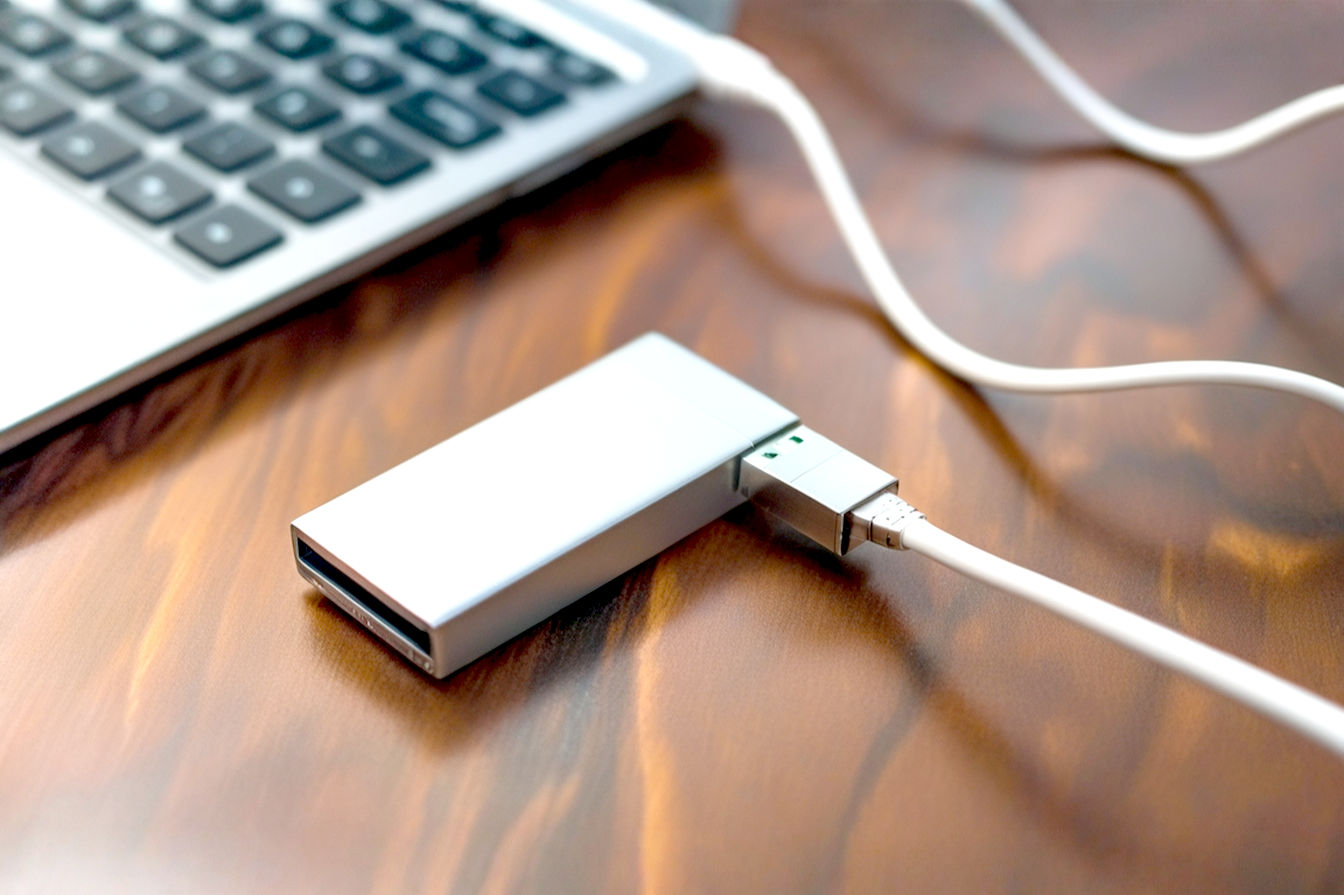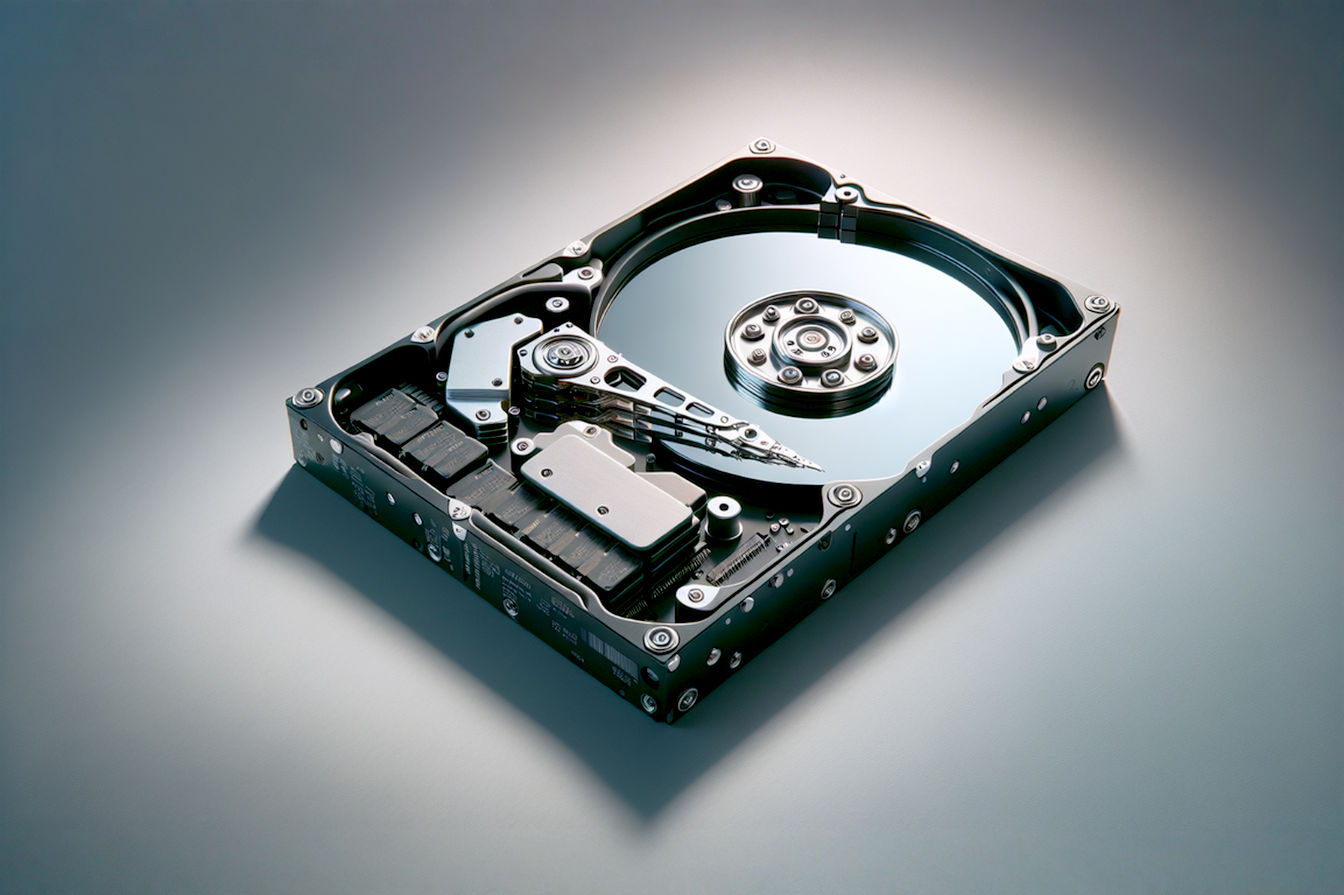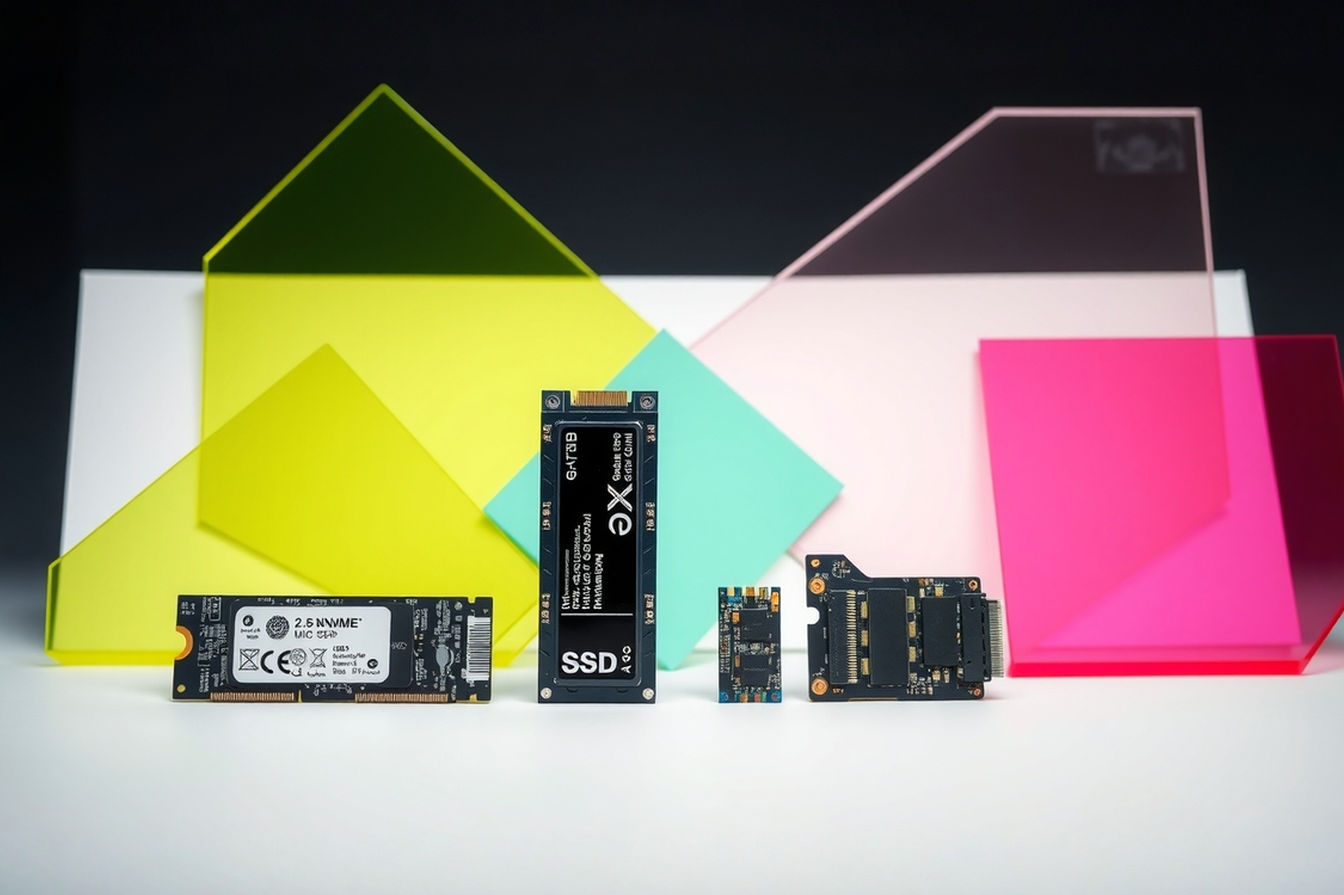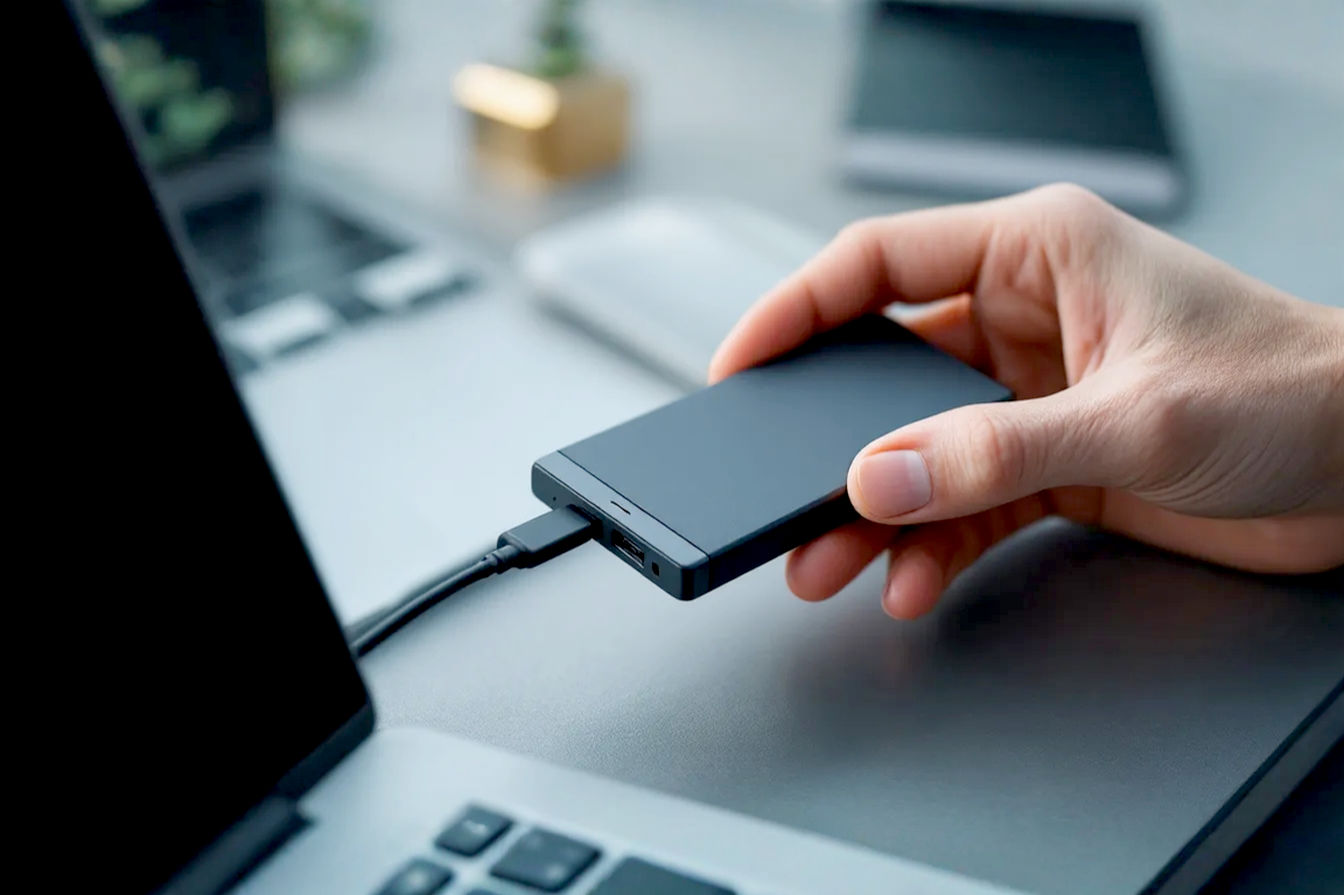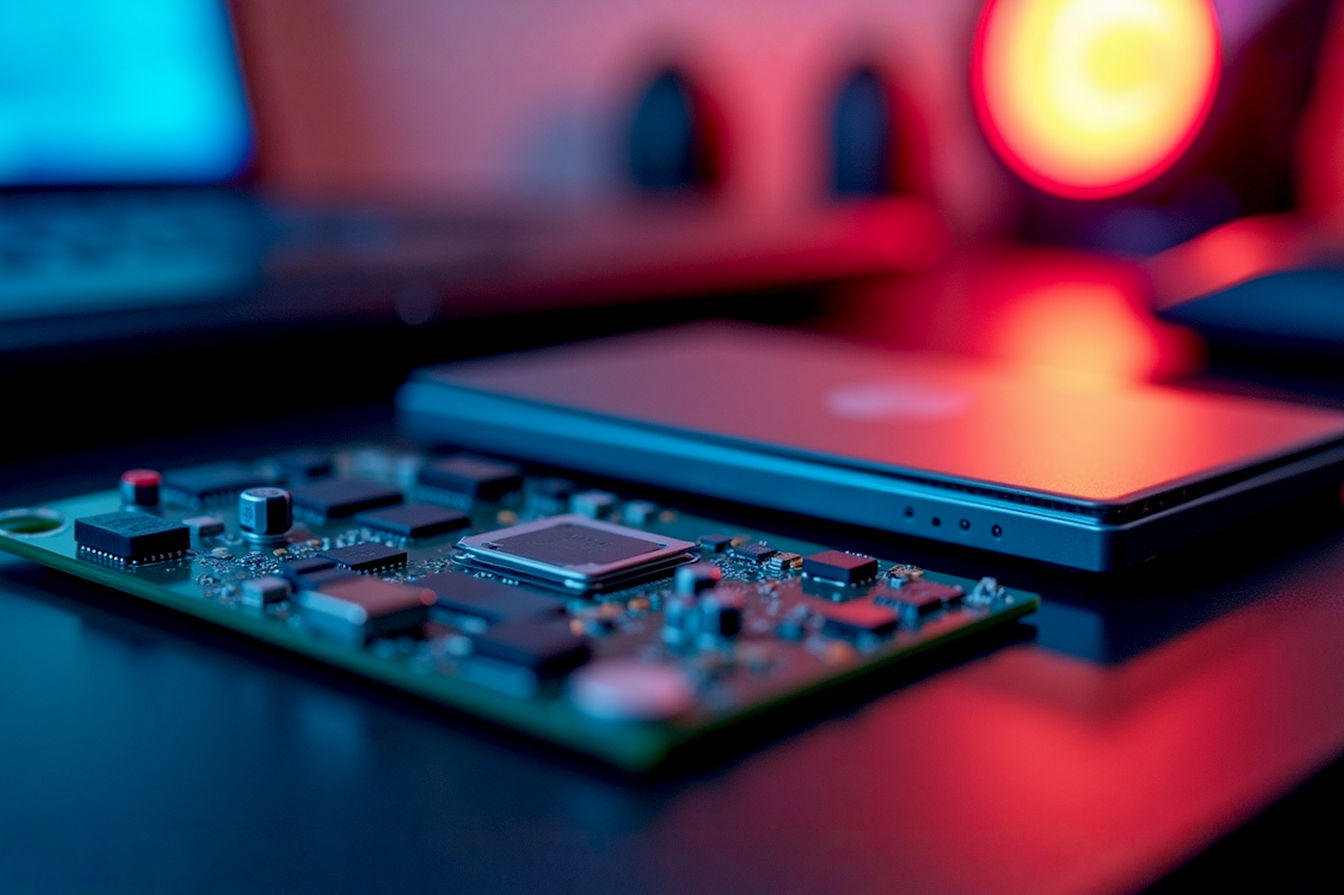This post may contain affiliate links. If you make a purchase through these links, we may earn a commission at no additional cost to you.
Remember the days of waiting… and waiting… for large files to copy to your external hard drive? It felt like an eternity, especially when dealing with high-resolution photos, 4K videos, or massive game files. Traditional portable hard disk drives (HDDs) got the job done, but their mechanical nature put a hard limit on how fast data could move. They were the reliable workhorses, but definitely not sprinters.
But what if you didn’t have to wait? What if you could transfer gigabytes of data in seconds, not minutes? That’s where the USB Solid State Drive comes in. These compact powerhouses have revolutionized portable storage, offering speeds that were once confined to internal computer components. They’re not just faster; they’re fundamentally different, unlocking a level of performance and convenience that mechanical drives simply can’t match. This isn’t just an incremental upgrade; it’s a leap forward in how we store, access, and transport our digital lives. Let’s dive into the technology that makes these drives so incredibly fast and why one might be the perfect upgrade for you.
What is a USB Solid State Drive?
At its heart, a USB Solid State Drive, often called a portable SSD, is a storage device that connects to your computer or other device via a USB cable. What sets it apart from older portable hard drives is how it stores data. Instead of using spinning magnetic platters and a read/write head that moves back and forth (like a miniature record player), an SSD uses flash memory.
Think of a traditional hard drive like a library with a robot arm that has to physically find the right shelf and book (data) every time you request something. This takes time because the arm has to move, and the platters have to spin into position. A solid state drive, on the other hand, is more like a massive digital library where every piece of information is instantly accessible electronically. There are no moving parts involved in reading or writing data. This fundamental difference is the “secret” behind their incredible speed.
The “Solid State” part of the name refers to the fact that it’s built entirely from solid electronic components, primarily semiconductors. There are no mechanical pieces that wear out from movement or limit performance. This design not only makes them much faster but also more durable and power-efficient than their mechanical counterparts. When you plug a USB SSD into a compatible port, it’s ready to transfer data almost instantly, without the spin-up time required by an HDD.
The Core Technology: How SSDs Achieve Speed
The blistering speed of a solid state drive isn’t magic; it’s the result of sophisticated technology working together. The two main components responsible are the NAND flash memory chips and the controller chip. The absence of moving parts is also a critical factor, eliminating mechanical bottlenecks.
NAND Flash Explained
NAND flash memory is the non-volatile storage medium used in SSDs. “Non-volatile” means it retains data even when the power is turned off, unlike the volatile memory (RAM) in your computer.
- Simplified: Imagine NAND flash as a grid of tiny cells that can hold an electrical charge. The presence or absence of a charge in a cell represents a bit of data (0 or 1). By grouping these cells, the drive stores information.
- Technical Details: NAND flash memory is organized into blocks and pages. Data is written to pages, but can only be erased in larger blocks. This block-based erasure is one of the complexities the controller has to manage. There are different types of NAND flash, primarily distinguished by how many bits of data each cell can store:
- SLC (Single-Level Cell): Stores 1 bit per cell. This is the fastest, most durable, and most expensive type. It’s typically found in high-end enterprise SSDs.
- MLC (Multi-Level Cell): Stores 2 bits per cell. Offers a good balance of speed, durability, and cost. Common in older or higher-performance consumer SSDs.
- TLC (Triple-Level Cell): Stores 3 bits per cell. This is currently the most common type in consumer SSDs, offering higher density (more storage in the same space) at a lower cost. It’s slower and less durable than SLC or MLC, but technologies like caching help mitigate this.
- QLC (Quad-Level Cell): Stores 4 bits per cell. Offers the highest density and lowest cost per gigabyte but is the slowest and least durable. Becoming more common in budget and high-capacity consumer drives.
The way data is written to and read from these cells, and how the controller manages the different voltage states representing multiple bits in MLC, TLC, and QLC, directly impacts the drive’s speed and lifespan (measured in Program/Erase cycles or P/E cycles). SLC requires only two voltage states per cell, making writes very fast and reliable. TLC requires eight states, and QLC requires sixteen, demanding more precise voltage control and taking more time to write and read accurately, thus reducing speed and durability compared to SLC.
The Role of the Controller Chip
While the NAND flash stores the data, the controller chip is the brain of the SSD. It’s a sophisticated processor that manages all operations within the drive. Its tasks are crucial for both performance and the longevity of the NAND flash.
- Simplified: The controller is like a super-efficient librarian who knows exactly where everything is, manages incoming and outgoing data requests, keeps the library organized, and makes sure no section gets worn out faster than others.
- Technical Details: Key functions of the controller include:
- Data Mapping: Translating the logical addresses your computer uses (like a file path) to the physical addresses on the NAND flash chips.
- Wear Leveling: Distributing write and erase cycles evenly across all NAND blocks. Since blocks have a limited number of P/E cycles before they degrade, wear leveling prevents specific blocks from wearing out prematurely, extending the overall life of the drive.
- Garbage Collection: Managing data that is marked for deletion. When data is deleted by the operating system, it’s not immediately erased from the NAND flash. The controller performs garbage collection in the background, identifying pages that contain invalid data and erasing the blocks they belong to so that new data can be written there. This process is essential for maintaining write performance over time.
- Error Correction Code (ECC): Detecting and correcting errors that can occur during data storage and retrieval due to factors like voltage fluctuations or cell degradation.
- Caching: Using a small amount of faster memory (like DRAM or a portion of the NAND flash configured as SLC cache) to temporarily store data being written or read, significantly boosting performance for bursty workloads.
A powerful and efficient controller is vital for maximizing the speed and lifespan of the NAND flash. Different controllers have varying levels of sophistication in their algorithms for wear leveling, garbage collection, and caching, which is why two SSDs using the same type of NAND can have different performance characteristics.
The “No Moving Parts” Advantage
Perhaps the most intuitive reason for an SSD’s speed advantage is the complete absence of moving mechanical components.
- Simplified: Imagine getting information from a physical filing cabinet versus getting it from a searchable database on a computer. The physical cabinet requires opening drawers, flipping through files – movement takes time. The database provides instant access.
- Technical Details: In an HDD, the read/write head must physically move across the spinning platters to access data. This involves mechanical latency – the time it takes for the head to move to the correct track (seek time) and the time it takes for the desired sector to rotate under the head (rotational latency). These latencies are measured in milliseconds, which is incredibly slow compared to the nanosecond-level access times of flash memory.
Because SSDs rely purely on electrical signals to access data, they have virtually zero seek time and rotational latency. This results in dramatically faster data access, especially for small, random read and write operations, which are common when opening applications, booting the operating system, or searching for files. This “no moving parts” design also makes SSDs far more resistant to physical shock and vibration, a significant advantage for portable storage that gets moved around frequently. They also consume less power, which is beneficial for laptop battery life and means they often don’t require external power adapters.
Connecting for Speed: Understanding USB Interfaces
The internal speed of the SSD is only half the story. How it connects to your computer is equally important. The USB interface acts as the pipeline for data transfer. Even the fastest SSD can only go as fast as the connection allows.
Evolution of USB
The Universal Serial Bus (USB) has evolved significantly over the years, with each new version offering increased speed and capability. Understanding these versions is key to knowing what kind of performance to expect from a portable SSD.
- USB 2.0: An older standard with a theoretical maximum speed of 480 Mbps (Megabits per second). In reality, you’d rarely see more than 30-40 MB/s (Megabytes per second). This is a significant bottleneck for any modern SSD.
- USB 3.0 / USB 3.1 Gen 1 / USB 3.2 Gen 1: These are all names for the same standard, originally called USB 3.0. It offers a theoretical maximum speed of 5 Gbps (Gigabits per second), or roughly 500 MB/s in real-world transfers. This was the first USB standard fast enough to allow many SATA-based SSDs to reach their full potential.
- USB 3.1 Gen 2 / USB 3.2 Gen 2: Also known as “SuperSpeed USB 10Gbps.” This standard doubles the speed of Gen 1, offering a theoretical maximum of 10 Gbps, or around 1000 MB/s (1 GB/s). This speed is sufficient for many high-performance SATA SSDs and even some early NVMe-based portable drives.
- USB 3.2 Gen 2×2: This standard significantly boosts speed by using two 10 Gbps lanes simultaneously, achieving a theoretical maximum of 20 Gbps, or around 2000 MB/s (2 GB/s). This requires both the drive and the computer’s port to support this specific configuration.
- USB4 / Thunderbolt: The latest standards push speeds even higher. USB4 can offer 20 Gbps or 40 Gbps, depending on the implementation, while Thunderbolt 3 and 4 offer 40 Gbps. These interfaces are capable of handling the full speed of even the fastest NVMe SSDs, reaching speeds of 2000 MB/s, 3000 MB/s, or even higher in some cases. Thunderbolt uses the USB-C connector and is often integrated into higher-end laptops and desktops. USB4 also uses the USB-C connector and is designed to converge USB and Thunderbolt capabilities.
It’s important to note that the names for USB standards have been confusingly rebranded multiple times. Always look for the “Gbps” or “Gbps” rating to understand the actual speed capability. A USB-C connector doesn’t automatically mean it’s the fastest standard; it’s just the shape of the plug. A USB-C port could support anything from USB 2.0 speeds all the way up to Thunderbolt 4.
Matching the Drive to the Port
To get the maximum speed from your USB SSD, both the drive and the port you connect it to must support the same high-speed standard.
- Simplified: Think of it like a highway. If your drive is a sports car (fast) but you’re on a country road (slow port), you can only go as fast as the road allows. If both are high-speed highways, you can go much faster.
- Real-world Speed Implications: If you have a super-fast NVMe portable SSD rated for 2000 MB/s but plug it into a USB 3.1 Gen 1 (5 Gbps) port, your speed will be limited to around 500 MB/s. You’re bottlenecked by the slower connection. To get the full 2000 MB/s, you need a port that supports at least USB 3.2 Gen 2×2 or faster (like Thunderbolt). Conversely, plugging a slower USB 3.1 Gen 1 SSD into a Thunderbolt port won’t make it faster than its 500 MB/s limit. Always check the specifications of both your portable SSD and your computer’s USB ports to understand the potential speed.
The cable also matters! While most USB-C cables look similar, they have different speed ratings. Using a cable rated for USB 2.0 or even 5 Gbps with a 10 Gbps or 20 Gbps drive and port will limit your speed. Always use the cable that came with your high-speed portable SSD or ensure any replacement cable is rated for the speed of your drive and port.
NVMe vs. SATA in Portable SSDs
You might see portable SSDs described as “SATA-based” or “NVMe-based.” This refers to the internal interface the NAND flash uses to communicate with the controller chip within the drive enclosure.
- Simplified: This is about the internal “language” the drive’s components use to talk to each other before the data even gets to the USB port. NVMe is a much faster language than SATA.
- Technical Details:
- SATA (Serial ATA): This was the standard interface for connecting storage drives (both HDDs and SSDs) to motherboards for many years. The latest version, SATA III, has a theoretical maximum speed of 6 Gbps, which translates to real-world speeds of around 550 MB/s. Many early portable SSDs used internal SATA SSDs connected to a USB-to-SATA bridge chip inside the enclosure. Their speed was limited by the SATA interface itself, generally topping out around 500-550 MB/s, even if the external USB port was faster.
- NVMe (Non-Volatile Memory Express): This is a newer interface designed specifically for flash memory. It connects directly to the computer’s PCIe (Peripheral Component Interconnect Express) bus, which offers much higher bandwidth than SATA. NVMe drives can achieve speeds several times faster than SATA drives, often exceeding 3000 MB/s or even 7000 MB/s for internal drives. Portable NVMe SSDs use an NVMe drive connected to a USB-to-NVMe bridge chip.
A portable NVMe SSD has the potential to be much faster than a portable SATA SSD because its internal components can communicate at higher speeds. However, the actual speed you get will still be limited by the USB interface you use to connect it. An NVMe portable SSD connected via USB 3.1 Gen 1 (5 Gbps) will perform similarly to a SATA portable SSD on the same port (around 500 MB/s). You need a faster USB port (like 10 Gbps, 20 Gbps, or 40 Gbps) to see the speed benefits of an NVMe-based portable drive. If maximum speed is your goal, look for a portable SSD that specifies both NVMe and a high-speed USB interface (like 10 Gbps, 20 Gbps, or Thunderbolt).
Real-World Performance: What “Ultra-Fast” Really Means
When manufacturers advertise “ultra-fast” speeds, they’re usually referring to the drive’s theoretical maximum sequential read and write speeds. But what does that mean for how you’ll actually use the drive?
Sequential vs. Random Speeds
Storage performance is typically measured in two main ways: sequential and random speeds.
- Simplified:
- Sequential Speed: How fast the drive can read or write large files in a continuous stream, like copying a single large video file.
- Random Speed: How fast the drive can read or write many small files scattered across the drive, like opening multiple applications or loading a complex game level.
- Technical Details:
- Sequential Read/Write: Measures the speed when accessing data blocks that are located right next to each other on the storage medium. This is the easiest type of access for any storage device and where SSDs (and even HDDs) achieve their highest speeds. Manufacturers often highlight these numbers (e.g., “Up to 1050 MB/s read”).
- Random Read/Write: Measures the speed when accessing data blocks that are randomly scattered across the storage medium. This is much harder for HDDs because the head has to physically move to each location. SSDs excel at random access because they can jump between locations electronically with virtually no delay. Random performance is measured in IOPS (Input/Output Operations Per Second). High random read/write speeds are crucial for tasks like booting your operating system, launching applications, loading project files with many small assets, or database operations.
While high sequential speeds are great for large file transfers, it’s the random read/write performance where SSDs truly leave HDDs in the dust. An HDD might have sequential speeds of 100-150 MB/s, but its random performance is typically less than 1 MB/s. A fast NVMe SSD, on the other hand, might have sequential speeds of 2000+ MB/s and random speeds of hundreds of MB/s (equivalent to hundreds of thousands of IOPS). This difference is why your computer feels so much snappier with an SSD, even if the peak transfer speeds aren’t always utilized. For portable SSDs, both matter: high sequential speeds for moving large media files, and good random speeds if you plan to run applications or virtual machines directly from the drive.
Benchmarking Portable SSDs
How do you know if a portable SSD lives up to its speed claims? Benchmarking software is used to measure performance.
- Simplified: Benchmarking is like putting the drive on a treadmill and seeing how fast it can run different types of tests.
- How to Interpret Numbers: Benchmarking tools like CrystalDiskMark or AS SSD Benchmark perform various tests, including sequential and random reads and writes using different file sizes and queue depths (how many requests are waiting). The numbers provided by manufacturers are usually the highest sequential read/write speeds achieved under optimal conditions. Real-world performance can vary depending on the specific files you’re transferring (many small files versus one large file), the capabilities of your computer’s USB controller, the quality of the cable, and even how full the drive is. When looking at benchmarks, pay attention to both sequential and random performance, as well as how the speed holds up during sustained transfers (some drives can slow down once their cache is full).
Factors Affecting Speed
Several factors beyond the drive’s internal capabilities and the USB port can influence the actual transfer speed you experience:
- Cable Quality: As mentioned earlier, using a low-quality or lower-rated USB cable will limit speed, even if your drive and port are high-speed.
- Computer’s USB Controller: The quality and implementation of the USB controller chip on your computer’s motherboard can impact performance.
- File Size and Type: Transferring one large file is typically faster than transferring the same amount of data spread across thousands of small files, especially for HDDs. While SSDs handle small files much better, there’s still some overhead per file.
- Operating System and Drivers: The efficiency of your operating system’s file system and the installed USB drivers can play a role.
- Drive Health and Fill Level: As NAND flash cells wear out or the drive gets close to being full, performance can sometimes degrade, especially write speeds, as the controller has to work harder to manage data and find available space.
- Background Processes: Other tasks running on your computer that are accessing the drive or consuming system resources can impact transfer speeds.
Understanding these factors helps set realistic expectations for real-world portable SSD performance.
Beyond Speed: Other Benefits of USB SSDs
While speed is the primary draw, portable SSDs offer several other compelling advantages over traditional portable HDDs.
Durability and Reliability
The lack of moving parts makes SSDs inherently more robust.
- Simplified: You can drop an SSD, and it’s much more likely to survive than a traditional hard drive, which has delicate spinning parts.
- Technical Details: HDDs are susceptible to damage from drops, bumps, and vibrations, especially while they are operating. The read/write head hovers just nanometers above the spinning platters; even a small shock can cause a “head crash,” where the head contacts the platter and damages the magnetic surface, leading to data loss. SSDs have no such vulnerability. They can withstand much higher levels of shock and vibration, making them ideal for portable use where they might be jostled in a bag or accidentally dropped. While not indestructible, their solid-state nature significantly reduces the risk of physical damage causing data loss compared to HDDs.
Portability and Size
SSDs are typically much smaller and lighter than comparable capacity HDDs.
- Simplified: They’re tiny, light bricks of pure storage power.
- Technical Details: Because they don’t require bulky platters, motors, and read/write arms, SSDs can be manufactured in very compact form factors. Many portable SSDs are credit-card sized or even smaller and weigh just a few ounces. This makes them incredibly easy to slip into a pocket, bag, or even attach to a keychain, offering high-capacity storage in an ultra-portable package.
Power Efficiency
SSDs consume less power than HDDs.
- Simplified: They sip power instead of gulping it.
- Technical Details: HDDs require power to spin the platters and move the read/write head. This mechanical work demands more energy. SSDs, relying on electrical signals, use significantly less power, both when active and when idle. This is particularly beneficial for portable SSDs that are bus-powered (drawing power directly from the USB port). Lower power consumption means less drain on your laptop’s battery and often eliminates the need for a separate power adapter, adding to their portability and convenience.
Quiet Operation
Without spinning platters or moving heads, SSDs are virtually silent.
- Simplified: They don’t make noise when they’re working.
- Technical Details: HDDs produce audible noise from the spinning motor and the movement of the read/write head seeking data. While not excessively loud, this noise can be noticeable, especially in a quiet environment. SSDs generate no mechanical noise, operating in complete silence. This contributes to a quieter computing experience, particularly when working directly from the portable drive.
USB SSDs vs. Portable HDDs: A Clear Comparison
To truly appreciate the impact of USB SSDs, it’s helpful to compare them directly to their predecessors, portable HDDs.
Speed Comparison
This is where the difference is most dramatic.
- Simplified: SSDs are like race cars; HDDs are like bicycles.
- Technical Details: As discussed, portable HDDs are limited by mechanical constraints, typically offering sequential read/write speeds in the range of 100-150 MB/s and very low random performance. Portable SSDs, leveraging flash memory and faster interfaces, can offer sequential speeds ranging from 500 MB/s (for SATA-based, 5 Gbps USB drives) up to 2000 MB/s or even 4000+ MB/s (for NVMe-based, high-speed USB/Thunderbolt drives). This means transferring a 100 GB file that might take 10-15 minutes on an HDD could take less than a minute on a fast portable SSD. The difference in random access speed is even more pronounced, making tasks like opening large applications or searching vast libraries of files incomparably faster on an SSD.
Durability Comparison
SSDs are significantly more durable.
- Simplified: SSDs can handle bumps; HDDs are fragile when active.
- Technical Details: Due to the risk of head crashes and damage to spinning platters, HDDs are much more vulnerable to physical shock, especially during operation. A fall from a desk can easily render an HDD unusable and potentially lead to irreversible data loss. SSDs, with no moving parts, are highly resistant to shock and vibration, making them a much safer option for storing valuable data on the go.
Cost Comparison
Historically, HDDs were much cheaper per gigabyte, but the gap is closing.
- Simplified: You pay more for SSD speed and durability, but they’re getting more affordable.
- Technical Details: Manufacturing flash memory is more complex and historically more expensive than manufacturing magnetic platters and mechanical components. Therefore, portable SSDs have traditionally cost significantly more per gigabyte than portable HDDs. However, as NAND flash manufacturing technology improves and scales, the cost per gigabyte for SSDs has been steadily decreasing. While a portable SSD still typically costs more than an equivalent capacity portable HDD, the price difference is less stark than it once was, especially for lower capacities. For high capacities (multiple terabytes), HDDs still offer a considerable cost advantage.
Use Case Comparison
The best choice depends on your needs.
- Choose a Portable HDD if: Your primary need is maximum storage capacity for the lowest possible price, and speed and durability are secondary concerns. This is suitable for long-term backups or storing large media archives that aren’t accessed frequently or quickly.
- Choose a USB SSD if: Speed, durability, and portability are priorities. This is ideal for quickly transferring large files, working directly from the external drive (e.g., video editing, running virtual machines), carrying data securely on the go, or needing a rugged storage solution.
For many users today, the significant speed and durability benefits of a portable SSD outweigh the remaining cost premium, making them the preferred choice for active, portable storage.
Choosing the Right USB SSD for Your Needs
With a variety of options available, selecting the perfect portable SSD requires considering a few key factors.
Capacity Considerations
How much storage space do you need?
- Simplified: How much stuff do you need to carry around?
- Details: Portable SSDs are available in a wide range of capacities, from 250GB or 500GB up to 4TB, 8TB, or even higher. Consider what you’ll be storing. For documents and photos, a smaller capacity might suffice. For large video files, game libraries, or extensive backups, you’ll need a larger drive. Remember that the usable capacity is slightly less than the advertised capacity due to formatting and the way storage is calculated (base 10 vs. base 2). Also, factor in future needs; it’s often wise to buy slightly more capacity than you think you need right now.
Speed Requirements
Match the drive’s speed to your use case and your computer’s ports.
- Simplified: How fast do you really need it to be?
- Details: If you just need faster-than-HDD speeds for occasional file transfers and your computer only has older USB-A ports (likely 5 Gbps), a portable SSD with a 10 Gbps or 20 Gbps rating might be overkill. A 5 Gbps (USB 3.1 Gen 1) drive will likely max out your port’s speed anyway and will be more affordable. If you regularly transfer massive files or work directly from the drive and your computer has 10 Gbps USB-C, 20 Gbps USB-C (USB 3.2 Gen 2×2), or Thunderbolt ports, then investing in a portable SSD that supports those higher speeds (often NVMe-based) will allow you to take full advantage of your system’s capabilities. Don’t pay for speed you can’t use.
Budget
Portable SSDs come at various price points.
- Simplified: How much are you willing to spend?
- Details: Price is generally correlated with capacity and speed. Higher capacities and faster interfaces (NVMe, 10Gbps+, Thunderbolt) cost more. Determine your budget and find the best balance of capacity and speed within that range. Remember that the price per gigabyte decreases at higher capacities, so a single larger drive might be more cost-effective than multiple smaller ones if you need a lot of storage.
Features
Consider additional features that might be important.
- Simplified: Does it need to be extra tough or have security?
- Details: Some portable SSDs offer features like:
- Ruggedization: Enhanced shock, water, and dust resistance, often with rubberized casings. Great if you’ll be using the drive in challenging environments.
- Hardware Encryption: Built-in encryption (like 256-bit AES) to protect your data if the drive is lost or stolen. Requires a password or fingerprint to access.
- Compact Size: Some drives prioritize being as small and light as possible.
- Included Software: Some brands include backup software or utilities.
- Brand Reputation and Warranty: Choose reputable brands known for reliability and check the warranty period.
Think about how you’ll use the drive and what features would add the most value for you.
Maximizing Your USB SSD’s Performance
Once you have a portable SSD, a few simple practices can help ensure you’re getting the best possible speed and longevity.
Using the Right Cable and Port
This is the most crucial step for maximizing speed.
- Simplified: Use the fastest cable and plug it into the fastest port available on your computer.
- Details: Always use the high-quality cable that came with your portable SSD. If you need a replacement, ensure it’s certified for the speed of your drive (e.g., a 10 Gbps drive needs a 10 Gbps or faster cable). Connect the drive to the fastest USB port on your computer. Look for ports labeled “SS” (SuperSpeed) or “SS 10” or “SS 20” (for 10 Gbps and 20 Gbps), or the Thunderbolt logo. USB-C ports can support various speeds, so check your computer’s specifications. Plugging a fast drive into a slow port is the most common reason for disappointing performance.
Keeping Firmware Updated
Like other electronic devices, SSDs have firmware (internal software) that can be updated.
- Simplified: Sometimes, updating the drive’s internal software can make it work better or fix bugs.
- Details: Drive manufacturers occasionally release firmware updates that can improve performance, enhance compatibility, or fix bugs related to the controller or NAND management. Check the manufacturer’s website for your specific drive model and follow their instructions for updating the firmware. This usually requires downloading a utility and running it while the drive is connected.
Proper Ejection
Always safely eject the portable SSD before unplugging it.
- Simplified: Don’t just yank it out; tell the computer you’re going to disconnect it.
- Details: When you’re transferring data or the drive is actively being used by the operating system, simply unplugging it can interrupt write operations, potentially corrupting files or even damaging the drive’s file system. Using the “Safely Remove Hardware” or “Eject” option in your operating system ensures that all pending write operations are completed and the drive is properly dismounted before you disconnect it.
Formatting Considerations
The file system you use to format the drive can impact compatibility and sometimes performance.
- Simplified: How the drive is set up to store files matters.
- Details: Common file systems include:
- NTFS: Default for Windows. Good for large files, supports permissions. Read-only on macOS without third-party software.
- exFAT: Compatible with Windows, macOS, and Linux. Good for large files. Often the default for portable drives. Generally a good choice for maximum compatibility.
- APFS: Default for macOS. Optimized for SSDs. Best performance on macOS but not natively readable by Windows.
- HFS+: Older macOS file system.
- FAT32: Older, highly compatible, but cannot store files larger than 4GB. Not recommended for modern use.
For maximum compatibility across different operating systems, exFAT is usually the best choice for a portable SSD. If you only plan to use the drive with a specific operating system, formatting it with that system’s native file system (NTFS for Windows, APFS for macOS) might offer slightly better performance or feature integration.
The Future of Portable Storage
The evolution of portable storage isn’t stopping with current USB SSDs. We can expect continued advancements.
- Higher Capacities: As NAND flash technology improves (e.g., moving to higher layer counts in 3D NAND and potentially QLC or even PLC – Penta-Level Cell – flash), the capacity of portable SSDs will continue to increase, offering multi-terabyte storage in increasingly smaller form factors.
- Faster Interfaces: USB4 and future iterations of Thunderbolt will provide even wider pipelines for data, allowing portable SSDs to reach speeds currently only seen in internal NVMe drives. We might see portable drives capable of 5000 MB/s, 7000 MB/s, or even faster in the coming years.
- Greater Efficiency: Continued refinement of controller technology and NAND flash will likely lead to even more power-efficient drives, further extending laptop battery life when connected.
- Enhanced Features: Expect to see more drives with advanced security features, integrated cables, and potentially even wireless connectivity options (though speed would be a limiting factor here compared to wired).
The trend is clear: portable storage is becoming faster, smaller, more durable, and higher in capacity, driven largely by the ongoing innovation in solid state technology.
Conclusion
The USB Solid State Drive has fundamentally changed what we expect from portable storage. By leveraging the speed and durability of NAND flash memory and sophisticated controller technology, and connecting via increasingly fast USB interfaces, these drives offer performance levels unimaginable with traditional hard drives just a few years ago.
The secret to their ultra-fast performance lies in the absence of mechanical bottlenecks, the parallel nature of flash memory access, and the efficiency of the controller chip. While portable HDDs still have a place for budget-conscious, high-capacity needs, the benefits of USB SSDs – their incredible speed, superior durability, compact size, and power efficiency – make them the definitive choice for anyone who needs fast, reliable access to their data on the go.
Choosing the right portable SSD involves considering your capacity needs, the speed capabilities of your computer’s ports, your budget, and any desired extra features like ruggedization or encryption. By understanding the technology and matching the drive to your specific use case, you can unlock the full potential of ultra-fast portable storage and say goodbye to those long waits for file transfers. The era of slow, fragile portable storage is rapidly fading, replaced by the lightning-fast, robust convenience of the USB SSD.

